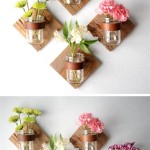Small Italian Room Decor: Maximizing Style in Limited Spaces
Italian design, renowned for its elegance, warmth, and focus on quality craftsmanship, can be successfully adapted to even the smallest of rooms. The key to achieving this aesthetic in a compact space lies in strategic planning, careful selection of furniture and accessories, and a commitment to creating a functional yet visually appealing environment. This article explores the core principles of small Italian room decor, offering practical advice and design ideas to transform limited square footage into a stylish Italian haven.
Prioritizing Functionality and Decluttering
Before introducing any decorative elements, it is crucial to address the functional aspects of the room. Small spaces require meticulous organization to avoid feeling cramped and cluttered. Start by assessing the existing furniture and belongings, asking whether each item is truly essential and contributes to the overall design scheme. Consider donating or selling items that are no longer needed or don’t fit the Italian aesthetic.
Storage solutions are paramount in a small Italian room. Opt for furniture with built-in storage, such as ottomans with hidden compartments, beds with under-bed drawers, and wall-mounted shelves or cabinets. Vertical storage is particularly effective in maximizing space, drawing the eye upward and creating a sense of height. Utilize baskets, boxes, and containers to keep smaller items organized and out of sight.
When choosing furniture for a small Italian room, prioritize pieces that serve multiple purposes. For instance, a sofa bed can provide extra sleeping space for guests, while a dining table with drop leaves can be expanded when needed and folded away when not in use. Think strategically about how each piece of furniture can contribute to the room's functionality without overwhelming the space.
Another important aspect of functionality is lighting. Natural light is highly valued in Italian design, so maximize its presence by keeping windows unobstructed and using sheer curtains or blinds. Supplement natural light with well-placed artificial lighting, such as lamps, sconces, and recessed lights, to create a warm and inviting atmosphere. Avoid harsh fluorescent lighting, which can make a small room feel sterile and uninviting.
Decluttering is an ongoing process. Regularly assess the contents of the room and eliminate anything that is no longer needed or used. A minimalist approach to decor will help to create a sense of spaciousness and calmness, which is essential in a small room.
Embracing Warm Colors and Natural Materials
The color palette in a small Italian room should evoke warmth, tranquility, and a connection to nature. Consider using earthy tones such as terracotta, ochre, olive green, and warm grays as the dominant colors. These hues create a sense of comfort and sophistication, reminiscent of the Italian countryside.
While bold colors can be used sparingly as accents, it is generally advisable to avoid overly bright or vibrant shades in a small room, as they can be overwhelming. Instead, opt for muted versions of these colors, such as a dusty rose or a soft turquoise, to add a touch of personality without overpowering the space.
Natural materials play a central role in Italian design. Incorporate elements such as wood, stone, and linen to bring texture and warmth to the room. Wood flooring, exposed brick, or stone accents can add a sense of rustic charm, while linen textiles can create a soft and inviting atmosphere.
When choosing furniture, look for pieces made from solid wood or with wood veneer finishes. Avoid plastic or synthetic materials, which can detract from the overall aesthetic. Upholstered furniture should be covered in natural fabrics such as linen, cotton, or wool. Leather can also be used, but sparingly, as it can be heavy and overpowering in a small room.
Accessories can also be used to introduce natural materials into the space. For example, terracotta pots filled with herbs or flowers can bring a touch of the outdoors in, while woven baskets can provide stylish storage solutions. Stone or ceramic vases can add a subtle yet elegant touch to shelves or tables.
The key is to create a cohesive color scheme and material palette that reflects the warmth and beauty of the Italian landscape. By choosing the right colors and materials, it is possible to transform a small room into a cozy and inviting retreat.
Incorporating Key Italian Design Elements
Several key design elements are characteristic of Italian style and can be incorporated into a small room to enhance its aesthetic. These include the use of artwork, decorative lighting, textiles, and architectural details.
Artwork is an essential element of Italian decor. Choose pieces that reflect the history and culture of Italy, such as landscapes, portraits, or still life paintings. Consider using antique frames to add a touch of authenticity. When hanging artwork in a small room, pay attention to scale. Avoid using oversized pieces, which can overwhelm the space. Instead, opt for smaller pieces that are grouped together to create a focal point.
Decorative lighting can also play a significant role in creating an Italian atmosphere. Chandeliers, sconces, and table lamps can add a touch of elegance and sophistication. Choose fixtures with warm, ambient lighting to create a cozy and inviting atmosphere. Consider using wrought iron or ceramic lighting fixtures to reflect the traditional Italian style.
Textiles are another important element of Italian decor. Use linen, cotton, or wool fabrics for curtains, upholstery, and bedding. Consider adding decorative pillows with intricate patterns or embroidery to add a touch of personality. Rugs can also be used to define different areas of the room and add warmth and texture. Choose rugs with classic Italian motifs or patterns, such as geometric designs or floral patterns.
Architectural details can also enhance the Italian feel of a small room. Consider adding crown molding, wainscoting, or other decorative elements to the walls. Exposing brick or stone walls can also add a touch of rustic charm. If the room has a fireplace, consider restoring it or adding a new one to create a focal point. Even smaller details, such as decorative door handles or window hardware, can contribute to the overall aesthetic.
It is essential to avoid overdoing it with these design elements. In a small room, less is often more. Choose a few key pieces that you love and that reflect your personal style, and then build the room around them. Remember to prioritize functionality and decluttering to create a space that is both beautiful and practical.
By carefully considering these principles, it is possible to successfully adapt Italian design to even the smallest of rooms. The result will be a stylish, functional, and inviting space that reflects the elegance and warmth of the Italian aesthetic.

We Have The Best Italian Small Living Room Ideas Of Year Milan Design Agenda

We Have The Best Italian Small Living Room Ideas Of Year

We Have The Best Italian Small Living Room Ideas Of Year Milan Design Agenda

How To Master A Modern Italian Look At Home Design

Italian Style Interiors 10 Top Ideas To Steal From Homes

A Small Italian Cottage The Style Files Apartment Rustic Home

We Have The Best Italian Small Living Room Ideas Of Year Milan Design Agenda

32 Stunning Italian Rustic Decor Ideas For Your Living Room Idee Arredamento Soggiorno Casa Bagno Rustico

Interior Bright Living Room With White And Grey Sofas Nice Rattan Table Also Beautiful Italian Villa Design Small Layout

How To Get Your Bedroom An Italian Decor Life In Italy







